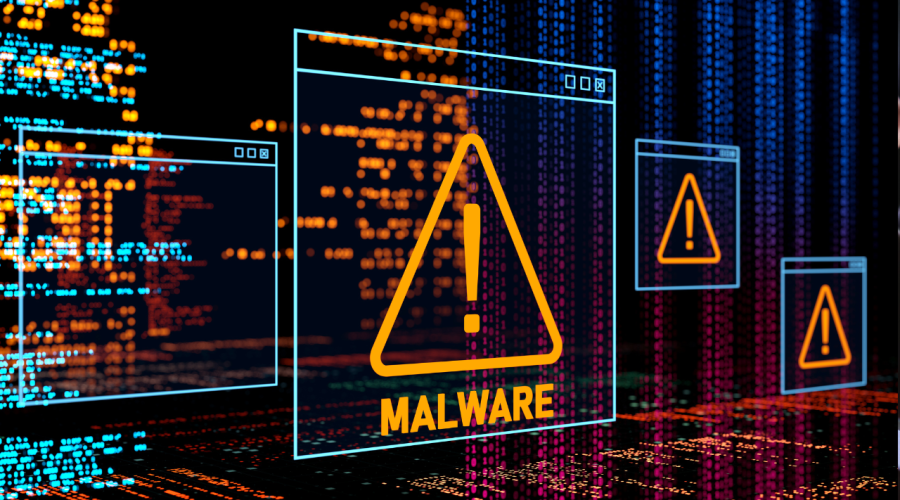Building AI Models to Detect and Prevent Malware in Real Time
Malware has become one of the biggest threats to individuals, businesses, and governments worldwide. Cybercriminals create malicious software to steal sensitive data, disrupt systems, or take control of devices for illegal purposes. As malware attacks become more advanced, traditional security solutions struggle to keep up. This has led to the rise of AI-powered malware analysts, which use artificial intelligence (AI) to detect and mitigate malware threats effectively. By leveraging machine learning and automation, these systems can analyze large amounts of data, identify patterns, and predict threats before they cause damage.

The use of AI in cybersecurity has revolutionized how security teams handle malware threats. Unlike traditional methods that rely on predefined signatures, AI-powered malware detection systems can adapt to new threats. This ability to detect and respond to malware dynamically makes AI a valuable tool in modern cybersecurity. This article will explore how AI-powered malware analysts work, the benefits they bring, the challenges they face, and the future of AI in malware detection.
Understanding Malware
Malware is a broad term that covers various types of malicious software, each designed to cause harm in different ways. Some of the most common types include:
- Viruses: These programs attach themselves to legitimate files and spread when executed.
- Worms: Unlike viruses, worms can replicate and spread without user interaction.
- Trojans: These appear as harmless programs but contain hidden malicious code.
- Ransomware: This malware encrypts files and demands payment for their release.
- Spyware: Designed to secretly collect user information without consent.
- Adware: Bombards users with unwanted advertisements, often slowing down systems.
Cybercriminals use malware for various purposes, including financial fraud, data theft, and corporate espionage. Traditional security systems rely on signature-based detection, where a unique identifier (signature) is used to recognize known malware. However, this method fails against new or modified malware strains. AI-powered malware analysts address this limitation by detecting behavioral patterns rather than relying on signatures alone.
How AI-Powered Malware Analysts Work
AI-powered malware analysts use machine learning and deep learning models to detect and analyze malware. These systems are designed to learn from vast amounts of data and identify malicious patterns. The process of AI-driven malware detection typically follows these steps:
1. Data Collection
AI models require large datasets to function effectively. These datasets contain samples of both malicious and benign software. Security researchers collect data from various sources, including:
- Malware databases
- Security logs
- User reports
- Network traffic analysis
2. Feature Extraction
To differentiate malware from legitimate software, AI models extract features that indicate malicious behavior. These features include:
- File structure and metadata
- API calls made by the program
- Network communication patterns
- Behavioral anomalies, such as unauthorized access attempts
3. Model Training
Once the features are extracted, the AI model is trained using machine learning algorithms. This process involves:
- Supervised learning: The model learns from labeled examples (known malware and safe files).
- Unsupervised learning: The model identifies anomalies without predefined labels.
- Reinforcement learning: The AI system improves its detection over time by learning from past decisions.
4. Detection and Classification
When a new file or program is analyzed, the AI model predicts whether it is malicious or safe. AI-powered malware analysts can classify threats based on severity, attack type, and potential impact. This helps security teams prioritize threats and respond accordingly.
5. Real-Time Monitoring and Adaptation
AI-powered systems continuously monitor networks and devices for signs of malware. They use adaptive learning techniques to refine their detection capabilities, ensuring they stay effective against evolving threats.
Benefits of AI-Powered Malware Analysts
AI-driven malware detection offers several advantages over traditional security methods:
1. Faster Detection and Response
AI can analyze thousands of files within seconds, allowing security teams to detect and respond to threats much faster than manual methods.
2. Detection of Unknown Malware
Since AI models focus on behavioral analysis, they can detect new or modified malware that traditional signature-based methods might miss.
3. Reduced False Positives
Traditional security tools sometimes flag legitimate programs as malware. AI-powered analysts improve accuracy by learning from past detection errors.
4. Automation and Efficiency
AI automates malware detection, reducing the workload on cybersecurity professionals and allowing them to focus on critical threats.
5. Proactive Threat Mitigation
By identifying malware before it executes, AI-powered analysts prevent potential damage and improve overall security.
Challenges in AI-Powered Malware Detection
Despite its advantages, AI-powered malware detection faces some challenges:
1. Adversarial Attacks
Cybercriminals use adversarial techniques to fool AI models by disguising malware to bypass detection.
2. Data Quality and Availability
AI models require large and diverse datasets to function effectively. Poor-quality data can lead to inaccurate predictions.
3. Resource Intensiveness
Training AI models requires significant computing power, making implementation costly for smaller organizations.
4. Ethical and Privacy Concerns
AI-driven security systems must balance threat detection with user privacy to avoid excessive surveillance or data misuse.
The Future of AI in Malware Detection
As cyber threats continue to evolve, AI-powered malware analysts will play an increasingly vital role in cybersecurity. Future advancements in AI-driven malware detection may include:
1. Improved AI Algorithms
AI models will continue to improve, allowing for more accurate and faster malware detection.
2. Integration with Other Security Tools
AI-powered malware analysts will work alongside firewalls, endpoint protection, and threat intelligence platforms to provide a comprehensive security approach.
3. Self-Learning Security Systems
Future AI systems will be capable of self-learning, allowing them to adapt without manual updates.
4. Collaboration Between Organizations
Sharing threat intelligence between companies and cybersecurity researchers will improve AI models and enhance malware detection.
5. Quantum Computing and AI
With advancements in quantum computing, AI models will become even more powerful, enabling faster and more accurate malware analysis.
AI-powered malware analysts are revolutionizing cybersecurity by providing faster, more efficient, and adaptive malware detection. Unlike traditional signature-based methods, AI-driven systems analyze behavior, allowing them to detect new and evolving threats. While challenges exist, continuous advancements in AI and machine learning will further improve malware detection capabilities. As cybercriminals develop more sophisticated malware, the role of AI in cybersecurity will only become more critical. Organizations must invest in AI-powered malware detection to stay ahead of cyber threats and protect their digital assets.



